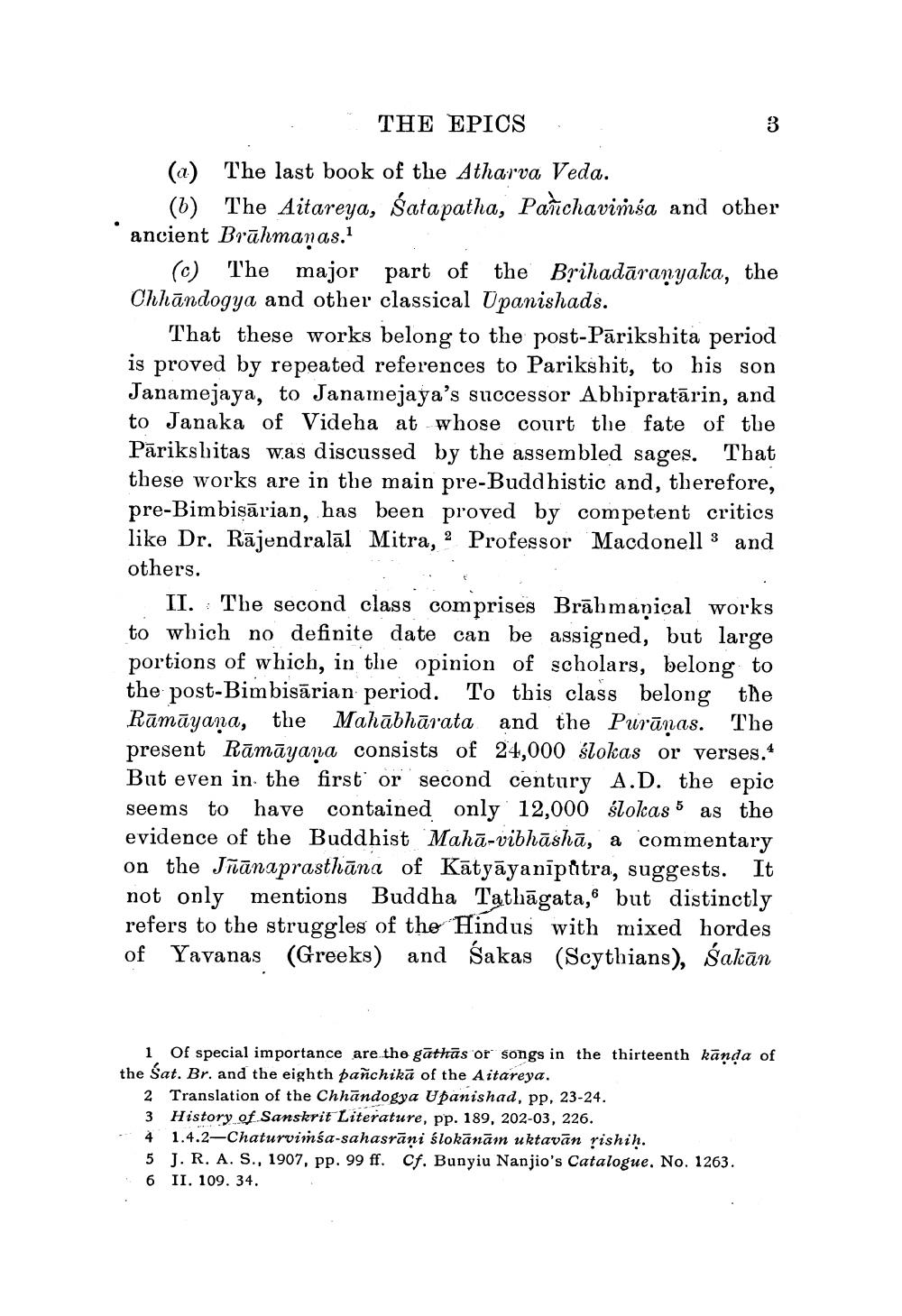________________
THE EPICS (a) The last book of the Atharva Veda.
(6) The Aitareya, śatapatha, Pañchaviñsa and other - ancient Brāhmanas."
(c) The major part of the Brihadāranyaka, the Chhāndogya and other classical Upanishads.
That these works belong to the post-Pārikshita period is proved by repeated references to Parikshit, to his son Janamejaya, to Janamejaya's successor Abhipratārin, and to Janaka of Videha at whose court the fate of the Pārikshitas was discussed by the assembled sages. That these works are in the main pre-Buddhistic and, therefore, pre-Bimbiņārian, has been proved by competent critics like Dr. Rājendralāl Mitra, 2 Professor Macdonell 3 and others.
II. The second class comprises Brāhmaṇical works to which no definite date can be assigned, but large portions of which, in the opinion of scholars, belong to the post-Bimbisārian period. To this class belong the Rāmāyana, the Mahabhārata and the Purānas. The present Rāmāyaṇa consists of 24,000 ślokas or verses. But even in the first or second century A.D. the epic seems to have contained only 12,000 ślokas 5 as the evidence of the Buddhist Mahā-vibhāshā, a commentary on the Jñānaprasthāna of Kātyāyanīpåtra, suggests. It not only mentions Buddha Tathāgata, but distinctly refers to the struggles of the Hindus with mixed hordes of Yavanas (Greeks) and Śakas (Scythians), śakān
1 Of special importance are the gathās or songs in the thirteenth kända of the Sat. Br. and the eighth pañchikā of the Aitareya.
2 Translation of the Chhāndogya Upanishad, pp, 23-24. 3 History of Sanskrit Literature, pp. 189, 202-03, 226. 4 1.4.2-Chaturvimśa-sahasrāni ślokānām uktavān rishiḥ. 5 J. R. A. S., 1907, pp. 99 ff. Cf. Bunyiu Nanjio's Catalogue. No. 1263. 6 II. 109. 34.




